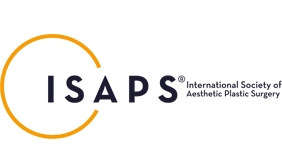Can a Cosmetic Surgeon Do Liposuction?
Can a Cosmetic Surgeon Do Liposuction?
Liposuction is a popular cosmetic procedure that many people consider to improve their body contours. But can a cosmetic surgeon perform this procedure? The answer is yes, a qualified cosmetic surgeon can indeed perform liposuction. However, it’s crucial to understand the procedure, its requirements, and the qualifications of the surgeon before making a decision.
Dubai Beauty Expenses can be very high because many people want to look their best in this glamorous city visitors and residents often spend a lot of money on luxury spa treatments fancy salons and high-end cosmetics to maintain their appearance
What is Liposuction?
Liposuction is a surgical procedure that removes excess fat deposits from specific areas of the body. It’s designed to sculpt and contour the body, not as a weight loss solution. The procedure involves making small incisions and using a thin tube called a cannula to suction out fat cells.
Dr. Shehzadi Tasneem Sultan, a renowned cosmetic surgeon, explains, “Liposuction is an effective way to target stubborn fat pockets that don’t respond to diet and exercise. It can significantly improve body proportions and boost self-confidence.”
Book A Consultation With Dr Shehzadi Tasneem
Top-rated Plastic Surgeon For Liposuction in Dubai
Installment Plan Available
Who is a Candidate for Liposuction?
Not everyone is an ideal candidate for liposuction. Suitable candidates typically:
- Are within 30% of their ideal body weight
- Have firm, elastic skin
- Are in good overall health
- Have realistic expectations about the results
It’s important to note that liposuction is not a substitute for a healthy lifestyle or a treatment for obesity.
Types of Liposuction Surgeries
There are several types of liposuction techniques available:
- Tumescent liposuction
- Ultrasound-assisted liposuction (UAL)
- Laser-assisted liposuction (LAL)
- Power-assisted liposuction (PAL)
Each technique has its advantages, and the choice depends on factors such as the treatment area, amount of fat to be removed, and the surgeon’s expertise.
Liposuction Treatment Areas
Liposuction can be performed on various parts of the body, including:
- Abdomen
- Thighs
- Hips and buttocks
- Arms
- Back
- Chest
- Neck and chin
The effectiveness of the procedure can vary depending on the area treated and the individual’s body composition.
Liposuction Under Chin
Liposuction under the chin, also known as submental liposuction, is a popular procedure to reduce a double chin. This targeted treatment can significantly improve the jawline and neck contour, creating a more youthful appearance.
Liposuction fat transfer is a procedure where fat is removed from one part of your body and put into another part to make it look fuller Doctors use special tools to take out the fat and then carefully place it where you want it Liposuction ongoing slimming is a way to remove extra fat from your body over time it helps you stay slim even after the surgery is done
Foam garment cleaning Axillary reshaping results can make your underarms look smoother and more toned This procedure helps reduce excess skin and fat in the armpit area for a neater appearance
Minimally invasive liposuction is a way to remove fat from the body using tiny cuts and special tools It helps people get rid of stubborn fat without big scars or long recovery times Cost-effective fat removal Eat healthy foods and exercise regularly to lose extra fat without spending much money This is a simple way for
Precision fat removal helps get rid of extra fat in specific body areas It uses special tools to target and remove unwanted fat without surgery
Treatment Area | Average Recovery Time | Expected Results |
Under Chin | 1-2 weeks | Improved jawline definition, reduced double chin |
Abdomen | 2-4 weeks | Flatter stomach, improved waistline |
Thighs | 2-4 weeks | Slimmer, more proportionate legs |
Arms | 1-2 weeks | Reduced arm circumference, improved tone |
Choosing a Cosmetic Surgeon for Liposuction 
Selecting the right cosmetic surgeon is crucial for a safe and successful liposuction procedure. Here are some key factors to consider:
Qualifications of a Cosmetic Surgeon
A qualified cosmetic surgeon should have:
- Board certification in plastic surgery or a related field
- Extensive experience in performing liposuction
- A track record of successful outcomes
- Ongoing education and training in the latest techniques
FAQs
Can a Cosmetic Surgeon Do Liposuction Safely?
Yes, a qualified and board-certified cosmetic surgeon can perform liposuction safely. It’s essential to choose a surgeon with specific training and experience in liposuction procedures. Always verify credentials and ask about the surgeon’s experience with the specific type of liposuction you’re considering.
How Do I Choose a Cosmetic Surgeon for Liposuction?
Choosing the right cosmetic surgeon for liposuction involves several steps. Start by researching board-certified surgeons in your area who specialize in body contouring procedures. Look at before and after photos of their previous patients, read reviews, and schedule consultations with multiple surgeons. During consultations, ask about their experience, techniques used, and expected outcomes for your specific case.
What Are the Risks of Having Liposuction Done by a Cosmetic Surgeon?
The risks of liposuction are generally minimal when performed by a qualified cosmetic surgeon. However, potential risks include infection, bleeding, contour irregularities, and adverse reactions to anesthesia. A skilled surgeon will discuss these risks with you and take necessary precautions to minimize them. It’s crucial to follow all pre- and post-operative instructions to reduce the likelihood of complications.
Can Liposuction Help with Obesity?
Liposuction is not a treatment for obesity or a substitute for weight loss. It’s designed to remove localized fat deposits that are resistant to diet and exercise. Ideal candidates for liposuction are generally within 30% of their ideal body weight. For individuals struggling with obesity, a comprehensive weight loss program under medical supervision is more appropriate.
How Common is Liposuction?
Liposuction is one of the most common cosmetic surgical procedures performed worldwide. According to recent statistics, hundreds of thousands of liposuction procedures are performed annually in the United States alone. Its popularity stems from its effectiveness in body contouring and the relatively short recovery time compared to more invasive surgeries.
Does Liposuction Remove Cellulite?
Liposuction is not specifically designed to treat cellulite. While it may improve the appearance of cellulite in some cases, it’s not a guaranteed solution. Other treatments may be more effective for addressing cellulite concerns.
What is the Difference Between Liposuction and Tummy Tuck?
Liposuction removes excess fat, while a tummy tuck (abdominoplasty) removes excess skin and tightens abdominal muscles. In some cases, both procedures may be combined for optimal results.
How Much Weight Can You Lose with Liposuction?
Liposuction is not a weight loss procedure. It typically removes 1-10 pounds of fat, depending on the extent of the treatment. The goal is body contouring rather than significant weight reduction.












